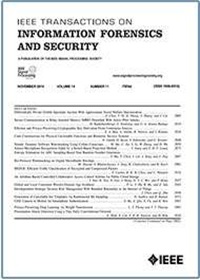Detecting Lifecycle-Related Concurrency Bugs in ROS Programs via Coverage-Guided Fuzzing
IF 8
1区 计算机科学
Q1 COMPUTER SCIENCE, THEORY & METHODS
IEEE Transactions on Information Forensics and Security
Pub Date : 2025-07-24
DOI:10.1109/TIFS.2025.3592562
引用次数: 0
Abstract
Robot Operating System (ROS) is very popular in robotic software development. To ease the process management of ROS programs, ROS provides a special lifecycle mechanism that can conveniently manage the state of each running process, which often involves resource allocation, initialization, and release; and this mechanism has been widely used in real-world ROS programs. However, due to code concurrency of ROS programs, a lifecycle-related function is inevitably concurrently executed with other functions, introducing the security risk of dangerous concurrency bugs involving null-pointer dereference and use after free. Due to the non-determinism of thread scheduling, these concurrency bugs are difficult to find and reproduce. In this paper, we design and implement a new coverage-guided fuzzing framework named通过覆盖引导模糊测试检测ROS程序中与生命周期相关的并发错误
机器人操作系统(ROS)在机器人软件开发中非常流行。为了简化ROS程序的进程管理,ROS提供了一种特殊的生命周期机制,可以方便地管理每个运行进程的状态,通常涉及资源分配、初始化和释放;这种机制已经广泛应用于实际的ROS程序中。然而,由于ROS程序的代码并发性,与生命周期相关的函数不可避免地会与其他函数并发执行,从而引入了涉及空指针解引用和释放后使用的危险并发错误的安全风险。由于线程调度的不确定性,这些并发性bug很难发现和重现。在本文中,我们设计并实现了一个新的覆盖引导的模糊测试框架ROCF,它可以有效地检测和重现ROS程序中与生命周期相关的并发错误,采用两种新颖的技术。首先,我们提出了一种生命周期感知模糊方法,该方法使用生命周期对序列作为新的覆盖度量来有效描述与生命周期相关的线程交织,用于ROS并发模糊的输入突变指导。其次,我们提出了一种基于启发式的复制方法,该方法通过策略输入修剪和延迟注入来识别能够稳定有效地复制发现的并发错误的最小输入序列。我们在ROS2中对8个流行的机器人程序进行了ROCF评估,发现了32个新的和真实的并发性错误,所有这些错误都已被ROS开发人员确认,并且已经分配了19个CVE id。
本文章由计算机程序翻译,如有差异,请以英文原文为准。
求助全文
约1分钟内获得全文
求助全文
来源期刊

IEEE Transactions on Information Forensics and Security
工程技术-工程:电子与电气
CiteScore
14.40
自引率
7.40%
发文量
234
审稿时长
6.5 months
期刊介绍:
The IEEE Transactions on Information Forensics and Security covers the sciences, technologies, and applications relating to information forensics, information security, biometrics, surveillance and systems applications that incorporate these features
 求助内容:
求助内容: 应助结果提醒方式:
应助结果提醒方式:


